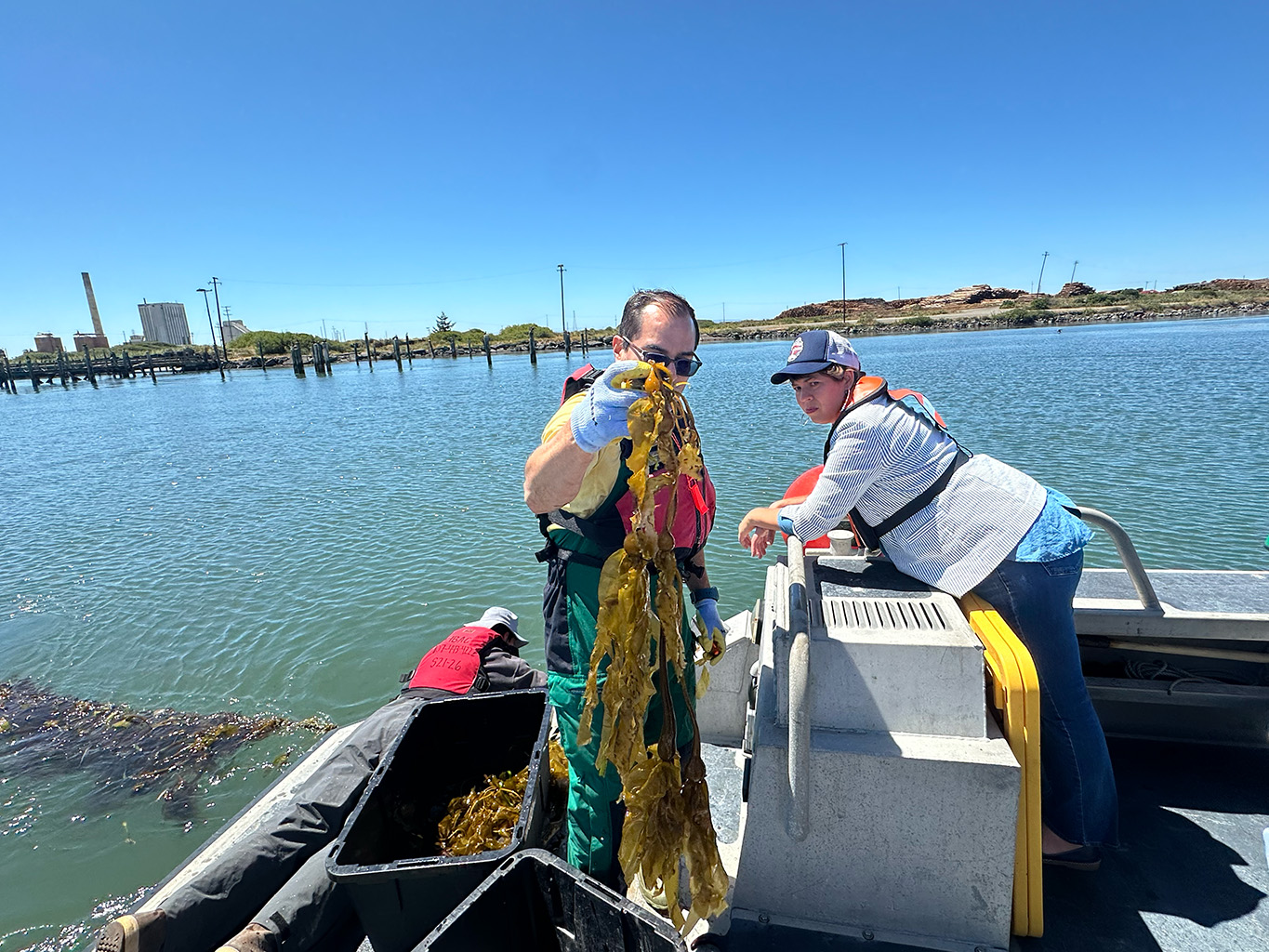Earlier this Spring and Summer, OST hosted two educational events to showcase seaweed aquaculture and research across the state for California policymakers. These events brought federal, state, and local officials to tour seaweed farms and academic facilities and learn about the science of seaweed directly from the experts. Seaweed aquaculture is the fastest growing form of aquaculture, but it remains a relatively small industry in California. Given the rising interest in seaweed’s multiple potential benefits, there is an increasing need to understand seaweed’s role for California’s climate, restoration, and blue economy goals.
In May, OST hosted the first educational tour and discussion at San Jose State University’s Moss Landing Marine Laboratories (MLML), in Monterey Bay. Co-sponsored by State Senator John Laird and Assemblymember Dawn Addis, the event involved a tour of MLML’s land-based Aquaculture Facility. There, researchers are cultivating various species of seaweeds to study applications for ecosystem restoration, methane reduction in cattle, and co-culture with other low-trophic species. Monterey Bay Seaweeds, the largest land-based seaweed farm in the U.S., also operates out of MLML. After touring the facilities, panelists Dr. Luke Gardner of California Sea Grant and MLML, Dr. Ross Clark of Monterey Bay Seaweeds, Dr. Maya deVries of San Jose State University, and Dr. Scott Hamilton of MLML discussed what we can learn from seaweed aquaculture.
Then, in July, OST hosted the second event in Humboldt Bay for state and federal legislative offices as well as local and county officials. Co-sponsored by State Senator Mike McGuire and Assemblymember Jim Wood, this event provided a unique opportunity to witness a seasonal bull kelp harvest at Cal Poly Humboldt’s seaweed farm. We also toured Sunken Seaweed’s bull kelp hatchery and tumble culture, and learned about how Hog Island Oyster Company is using the seaweed growing on their oyster gear. The tour was followed by a roundtable discussion at the Humboldt Bay Harbor District to discuss science and policy needs of seaweed in Humboldt and the rest of the state.

These were some of the key takeaways gathered from the tours:
- • Collaboration and community at the forefront: Despite significant barriers to entry and many remaining challenges faced by the seaweed aquaculture industry in California, collaborations between academic researchers and aquaculturists have played an important role in advancing seaweed aquaculture science and applications. This is exemplified by the work of Sunken Seaweed, the Rou Daladurr Food Sovereignty Lab at Cal Poly Humboldt, and their recently state-funded “Kelp Guardians” project to build capacity for tribal stewardship and integrate traditional ecological knowledge into cultivating seaweed.
- • A small market with potential to diversify and grow: The current seaweed farming industry in Moss Landing and Humboldt Bay supplies mostly to the local “high value, low volume” culinary market. However, farmers and researchers see additional market value behind a responsibly developed seaweed industry. This includes the need for further research and investment into understanding the potential climate benefits and restorative purposes provided by cultivating native kelp species in California.
- • Challenges remain, but we can learn from ports: Ports play an important role in supporting responsible aquaculture in the state. In 2016, the Humboldt Bay Harbor District created pre-permitted sites for low trophic aquaculture, allowing farmers to obtain leases, approval, and monitoring support. The various updates, amendments, and challenges the Harbor District has encountered to maintain master permits and successfully manage these pre-permitted sites should be shared to inform responsible development of aquaculture across the state.
These events served to educate state, federal, and local policymakers regarding the science of seaweed aquaculture. OST brings value by facilitating these cross-sectoral conversations between policy, academic, and industry communities to explore the challenges and opportunities facing our ocean and coast and how science can inform innovative solutions, like seaweed.




